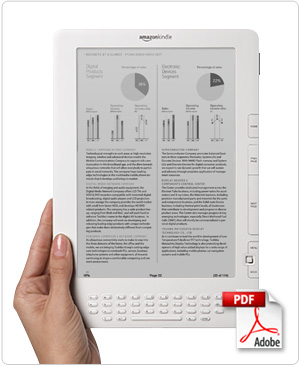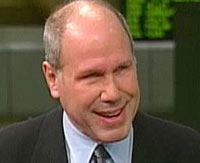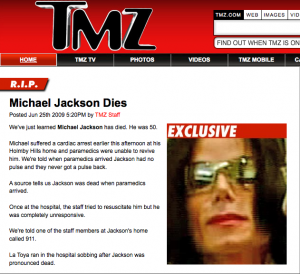The New York Times is building a paywall despite the 2005-2007 disaster that was TimesSelect. On Wednesday, the Times announced the decision to start charging for access beyond a specified number of articles beginning in 2011. Details, including the fee and the access threshold, weren’t revealed. The Times is leaving itself plenty of leeway to modify or even call off the program, knowing that the eyes of a $35 billion industry are upon it. “We can’t get this halfway right or three-quarters of the way right. We have to get this really, really right,” said Times Co. publisher Arthur Sulzberger, Jr.
 The Times is stepping with characteristic caution into territory that its own coverage acknowledged has both “tempted and terrified” publishers. The most well-read newspaper in America is under pressure to set a precedent that others can follow while at the same time preserving its dominance and an online revenue stream that is a growing part of its business.
The Times is stepping with characteristic caution into territory that its own coverage acknowledged has both “tempted and terrified” publishers. The most well-read newspaper in America is under pressure to set a precedent that others can follow while at the same time preserving its dominance and an online revenue stream that is a growing part of its business.
A Q&A on the Times‘ website sounds almost apologetic in tone. It points out that readers will continue to have full access to Times content from search engines but will not be able to click through to other stories on the website without paying a fee. Readers will be entitled to access a certain number of articles each month at no charge, but the limit was not specified. The decision to announce the paywall a year before implementation gives the Times some breathing room to assess reaction and set thresholds that readers can live with. The article in the Times notes that most readers still arrive at NYTimes.com via search engine, meaning that their experience will be undisturbed. The piece also notes that reader reaction on the Times’ website has been modestly favorable toward the move.
Even if the Times‘ paywall experience is successful, there’s no guarantee that other newspapers will be able to duplicate it. The newspaper enjoys a cachet that few other titles can duplicate and it’s likely that some readers will support the initiative in the name of keeping the hallowed title afloat. The same can probably not be said for the Chicago Tribune.
The New York Post reports that New York Times Co. minority owner Carlos Slim is a big fan of paid content and has been pushing Times Co. executives behind the scenes to take the plunge. TimesSelect was an early stab at paid content that floundered when columnists complained that their visibility plummeted when a price was put on their work.
The problem with paywalls is that they cannibalize Web traffic that could otherwise be monetized with advertising. ClickZ reports that Forrester Research analyst James McQuivey predicts that ad revenues for NYTimes.com will drop by up to 50% after the paywall is erected. It also notes that Newsday saw website traffic drop 21% in the month after it built a limited paywall last fall. The trick is to find the right balance and The New York Times, with its history of online innovation, is the best candidate to reach a happy medium.
The Times is diversifying its revenue through a novel partnership with four institutions of higher learning that deliver Times expertise as online courses. This spring, the Times will start awarding certificates to paying students. For example, Ball State University just launched a six-week course on video storytelling that bestows certificates in “emerging media journalism” co-validated by the Times and Ball State. We love this idea. While tuition will never be a major revenue stream for the old Gray Lady, it is at least a diversification out of the declining advertising business. And with more citizens wanting to learn the craft of storytelling, perhaps a course with Times reporters and editors is something they’d be willing to pay for.
 Internet Out of the Courtroom
Internet Out of the Courtroom
Print journalists can take some heart – while new-media advocates roll their eyes – at two court decisions last week that limit the dissemination of trial coverage over the Internet. First, the U.S. Supreme Court overrode a trial judge’s decision and blocked video coverage of a federal trial about the constitutionality of California’s law banning gay marriage. Then a Florida judge ruled later in the week that a Florida Times-Union reporter couldn’t live blog a capital murder trial.
The California case is important because it involves a highly polarized issue that has implications in other states. A 5-4 conservative majority ruled that the judge in the case had erred by initially allowing video of the trial to be streamed to other courtrooms even though that practice is usually denied in federal cases. However, the justices did not address the bigger constitutional question of whether live video is permissible in legal proceedings.
In the Florida case, the judge banned a reporter from live blogging because he said the noise was distracting. A second reporter who was texting notes from the courtroom on a cell phone was also told to cut it out. However, a third reporter who was writing notes on paper was not disciplined. The tweeting journalist had drawn a more than 1,300 followers on Twitter for her coverage of the trial.
The cases illustrate the discomfort that new media is creating in the trial courts. The capability of anyone to relate the events of a trial would seem to comply with the founding fathers’ desire for legal transparency, but the fact that those narratives can now be communicated worldwide makes some jurists nervous. Both of these issues are likely to need a Supreme Court resolution.
Miscellany
When Nielsen orphaned Editor & Publisher in a sale of several of its titles to e5 Global Media last month, the staff at the venerable newspaper industry trade publication held out for a rescue. It came. Duncan McIntosh Co., an Irvine, Calif.-based publisher of trade magazines that ironically include FishRap News (which has nothing to do with newspapers), has picked up E&P and will continue more or less uninterrupted publication. “We’re all very excited around here about the news,” said staffer Mark Fitzgerald, who gains a promotion to editor in the process. Monthly print publication will resume next month and entries on the magazine’s two blogs – Fitz & Jen Give You the Business and the E&P Pub – have already resumed. Hooray.
The parent company of MediaNews Group, Inc. will file for bankruptcy, the 13th such filing by a U.S. newspaper publisher in the last 13 months. But it doesn’t look like MediaNews plans to stay in Chapter 11 for long. It has a debt restructuring plan in place that will cut its debt from about $930 million to $165 million and swap senior debtors’ paper for stock. The 116 creditors will have a majority of stock but not voting control. The Hearst Corp. and the family of MediaNews co-founder Richard Scudder are reportedly giving up interests in the company. Hearst took a $300 million stake in MediaNews in 2006 and that investment is now effectively worthless. MediaNews said newspaper operations, employees and suppliers wouldn’t be affected and that the debt restructuring plan would enable the company to quickly emerge in better financial condition.
Dan Bloom has come up with a new word for newspapers. He calls them “snailpapers.” Only the longtime newspaperman insists this is a term of endearment, not derision. He thinks maybe if newspapers poked more fun at themselves instead of getting all righteously indignant about new media, they would generate more sympathy. More on his blog.
The Greenwood Lake (N.Y.) News is shutting down after 46 years, idling a small staff. The weekly had been honored for editorial quality by the New York Press Association.
Dramatic Effect
We get some unusual requests at the Death Watch and always try to be helpful, but we were stumped by this inquiry from Amy Wimmer Schwarb, a 15-year journalism veteran:
“What’s more old-school than the print-on-paper newspaper we both love?” she writes. “The theater, of course. I’ve been working on and off for the past 18 months on a script that I’m about to start submitting to play competitions around the country. The title is ‘Dash Thirty Dash: An Allegory for the End Times.’ The piece celebrates the fun and beauty of the business and documents the suicide of newspapers.
“My concern about submitting this play through traditional channels is that I want it to be seen NOW, and sometimes, such channels have long lag times. Through your online travels and contacts, do you have any suggestions for how I might distribute this work? In my dreams, it will be performed in small independent theaters around the country.”
We couldn’t help, but perhaps you can. Post any ideas below as comments, or e-mail us using the contact box on the right and we’ll put you in touch with Amy directly.
 Judy Sims nails it with this post about the denial that continues to plague the news industry. While paying homage to Journal Register’s John Paton, she asks why there aren’t more like him? Newspaper revenues have contracted by more than half in the last five years, yet the leadership at these companies continues to look for ways to bring back the past with $30 iPad apps and subscription models.
Judy Sims nails it with this post about the denial that continues to plague the news industry. While paying homage to Journal Register’s John Paton, she asks why there aren’t more like him? Newspaper revenues have contracted by more than half in the last five years, yet the leadership at these companies continues to look for ways to bring back the past with $30 iPad apps and subscription models.







 Their oped raises an important point about the influence of traffic on journalistic quality and the declining value of circulation. As we noted last September, circulation at some of the country’s largest magazines
Their oped raises an important point about the influence of traffic on journalistic quality and the declining value of circulation. As we noted last September, circulation at some of the country’s largest magazines 



 Thank goodness we have something to fill up the cold, light-deprived days of January: speculation about a new Apple tablet computer. Apple’s got a big press event scheduled for Jan. 26 and the blogosphere is overflowing with rumors that it will announce a flat-screen portable computer that’ll make the Amazon Kindle look like an Etch-a-Sketch.
Thank goodness we have something to fill up the cold, light-deprived days of January: speculation about a new Apple tablet computer. Apple’s got a big press event scheduled for Jan. 26 and the blogosphere is overflowing with rumors that it will announce a flat-screen portable computer that’ll make the Amazon Kindle look like an Etch-a-Sketch.


